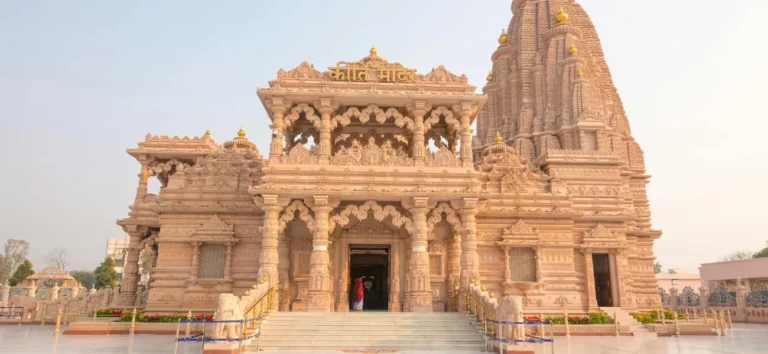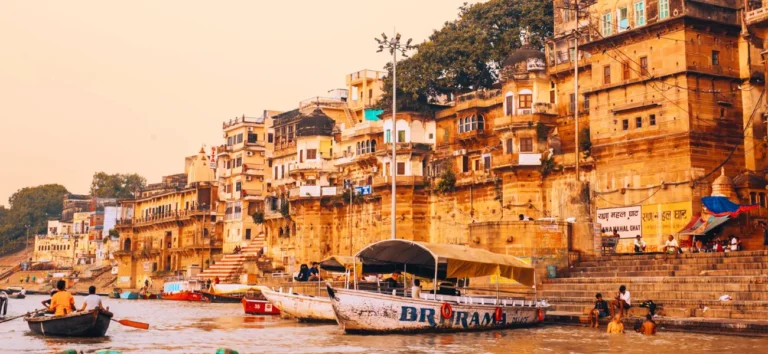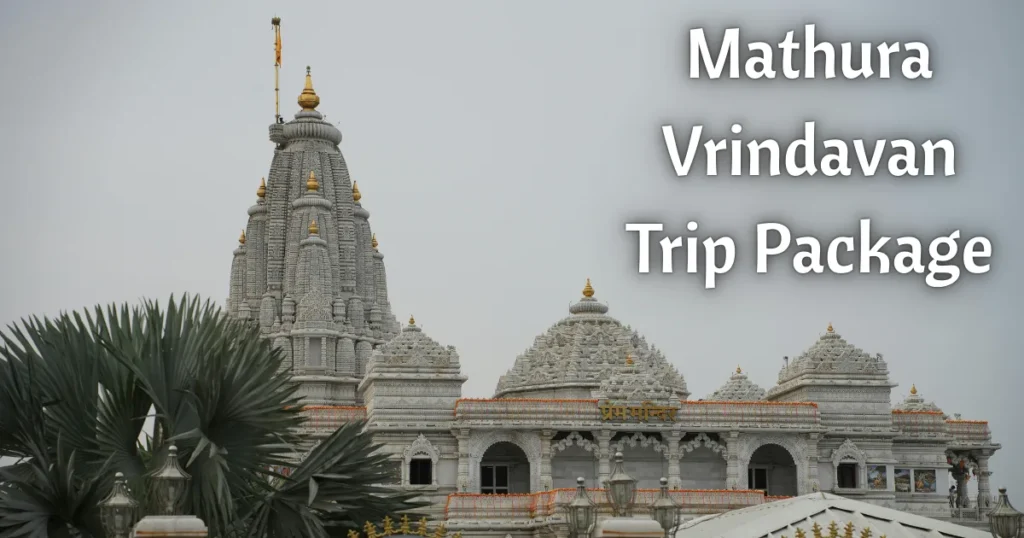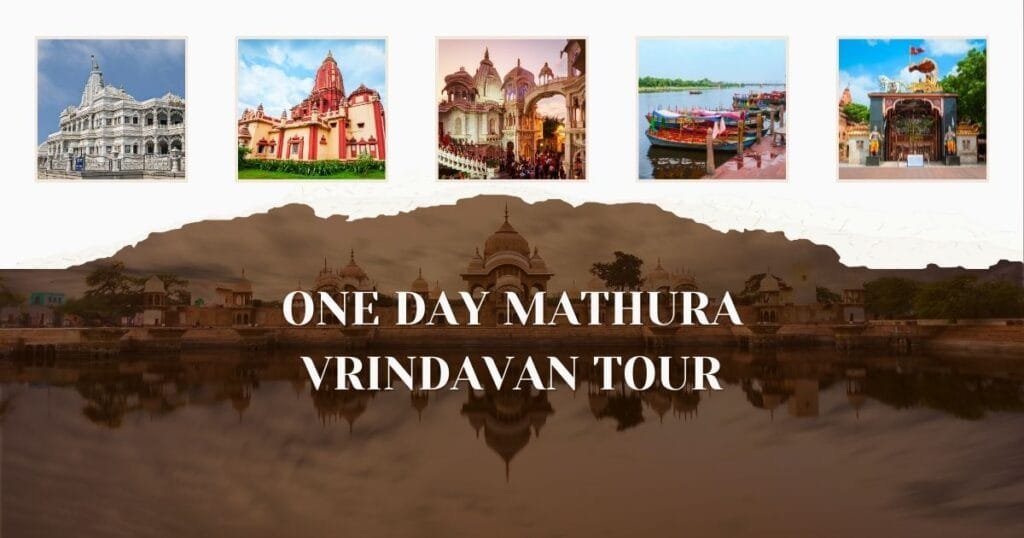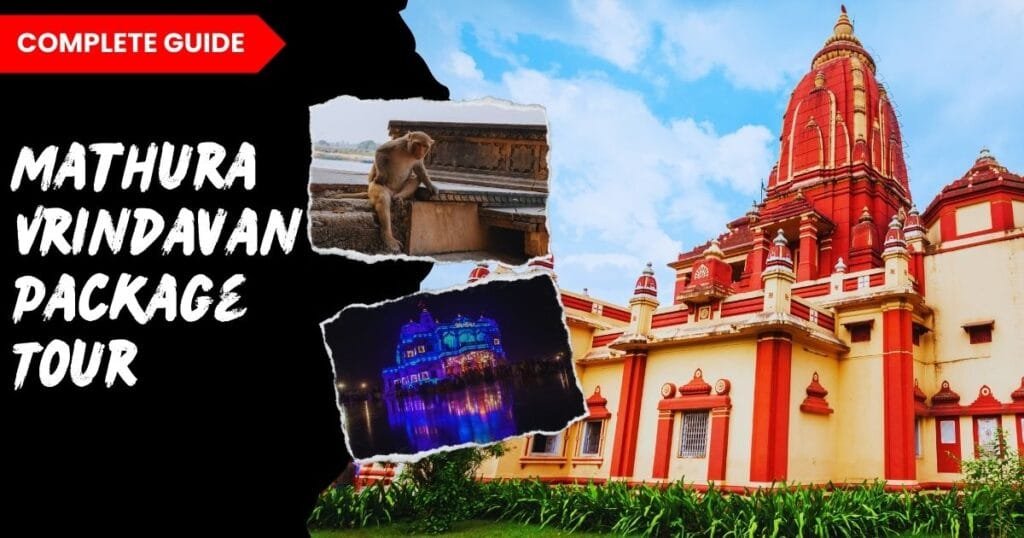Ayodhya is not just a city—it is a sacred universe where divinity, history, and bhakti (devotion) blend together seamlessly. Revered as the birthplace of Lord Shri Ram, Ayodhya is considered one of the seven Mokshadayini Puris (cities that grant liberation). Situated on the serene banks of the Sarayu River, the city is mentioned in ancient scriptures like the Ramayana, Skanda Purana, and Atharva Veda. Today, with the recent construction of the grand Shri Ram Janmabhoomi Mandir, Ayodhya has reclaimed its place as a spiritual capital of India.
Highlights
ToggleFrom majestic temples and ancient ghats to sacred hillocks and literary monuments, this city is filled with sacred touchpoints that narrate stories of faith, valor, sacrifice, and divine love. Here is your deeply detailed guide to the 10 Must Visit Places in Ayodhya—designed to give both practical travel details and spiritual inspiration.
1. Shri Ram Janmabhoomi – The Sacred Epicenter of Sanatan Dharma
- Spiritual Importance: Believed to be the exact site where Lord Ram was born during the Treta Yuga.
- Current Developments: The newly built Shri Ram Janmabhoomi Mandir is set to be one of the largest and most magnificent Hindu temples in the world. It was inaugurated in January 2024 with immense national and global participation.
- Architectural Significance: Built using traditional Nagara style architecture, without using cement or steel—crafted entirely from pink sandstone from Rajasthan.
- Darshan Information:
- Morning Aarti: 6:30 AM
- General Darshan Timings: 7:00 AM to 11:30 AM & 2:00 PM to 6:30 PM
- Entry Fee: Free for all; special VIP darshan tickets are available.
Why visit?
This is the heart of Ayodhya, where faith becomes tangible. Millions come here not just to visit, but to feel the presence of Shri Ram.
2. Hanuman Garhi – The Spiritual Gatekeeper of Ayodhya
- Legend: As per tradition, no darshan of Ram is complete without first seeking blessings from Lord Hanuman. Hanuman Garhi is said to be the place where Hanuman lived to protect Ayodhya.
- Architecture: Built in a fortress style, it is situated on a small hillock with 76 steps leading to the shrine.
- Main Idol: Depicts Bal Hanuman (child Hanuman) in the lap of his mother Anjani—an image that melts the heart of every devotee.
- Festivals: Hanuman Jayanti and Ram Navami are celebrated with grandeur.
Why visit?
It’s a must for anyone entering Ayodhya. Devotion, strength, and humility all come together at this holy fort.
3. Kanak Bhawan – The Golden Palace of Ram and Sita
- Historical Context: According to legends, this palace had gifted by Kaikeyi to Sita after her marriage to Ram.
- Present Form: Rebuilt in 1891 by Queen Vrishbhanu Kunwari of Tikamgarh, the temple has beautiful glasswork, colorful paintings, and royal shrines.
- Main Deities: The golden idols of Lord Ram and Goddess Sita in regal attire and posture—symbolizing their divine union.
- Other Attractions: The temple complex also includes murals narrating Ramayana stories.
Why visit?
It’s a glimpse into Ayodhya’s royal spiritual heritage—a mix of bhakti, beauty, and bliss.
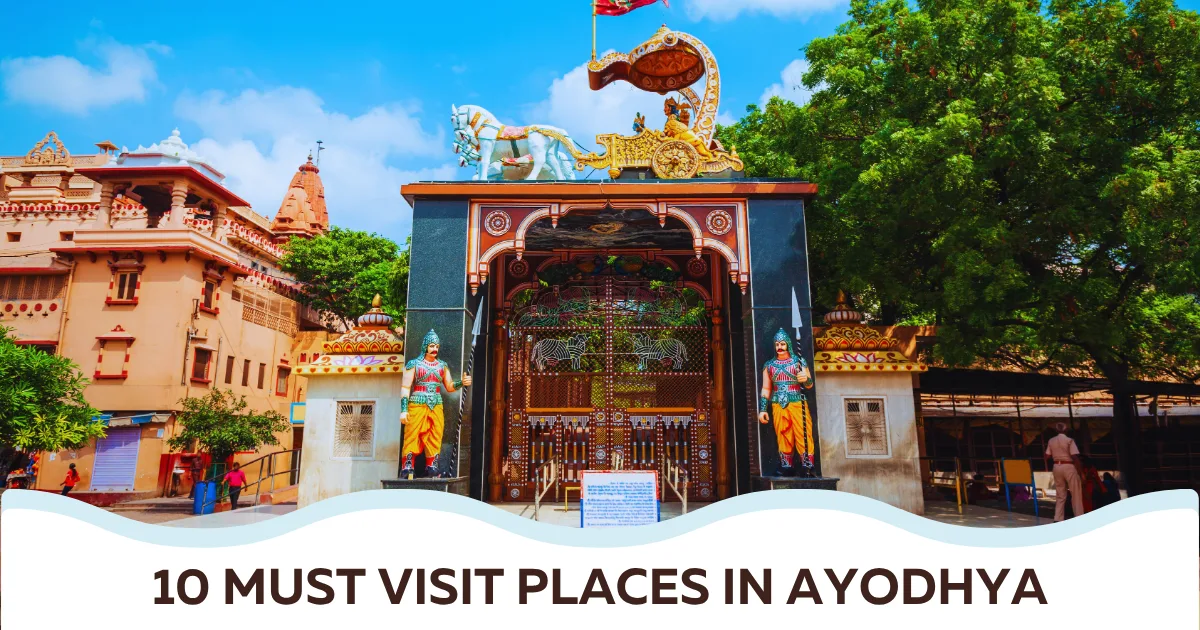
4. Treta Ke Thakur – Witness the Legacy of Ancient Rituals
- Spiritual Background: Built on the site where Lord Ram performed Ashwamedha Yajna after returning from exile.
- Age: Over 3,000 years old; the current structure had rebuilt by the king of Kullu in the 18th century.
- Deities: Life-size black stone idols of Ram, Lakshman, Bharat, Shatrughan, and Sita, believed to have installed by King Vikramaditya.
- Timings: Open only on Ekadashi days, making it a special pilgrimage spot.
Why visit?
For those wanting to walk through the events of Ram Rajya, this is the temple that carries the essence of ancient rituals.
5. Nageshwarnath Temple – The Divine Presence of Lord Shiva in Ram’s City
- Mythology: Built by Kush, Lord Ram’s son, for a Nag-Kanya he loved. She was a devout follower of Lord Shiva.
- Significance: Highlights the presence of Shaivite tradition in a dominantly Vaishnavite city.
- Architecture: A traditional North Indian temple with beautiful shikhara, old paintings, and sacred Lingam.
- Celebrations: During Mahashivratri, the temple has filled with devotees from across Uttar Pradesh.
Why visit?
Among the Must Visit Places in Ayodhya, this temple unites Shiva and Ram in one sacred space.
6. Ram Ki Paidi – Sacred Ghats Along the Sarayu
- Importance: A series of ghats developed along the Sarayu River where devotees take holy dips.
- Rituals: Performing Snan (bath), Tarpan, and Aarti here is considered highly meritorious.
- Evening Aarti: A spectacle of spirituality with rows of diyas, chanting, and bells that echo across the river.
- Deepotsav Festival: On the eve of Diwali, over 22 lakh diyas are lit here—setting a Guinness World Record.
Why visit?
This is where faith touches nature. The energy here during sunrise or Aarti is spiritually overwhelming.
7. Guptar Ghat – Ram’s Last Divine Act on Earth
- Legend: Believed to be the place where Lord Ram took Jal Samadhi and returned to Vaikuntha in his divine form.
- Temples Nearby: Chakrati Mahadev Temple and Ram Darbar nearby make it a significant pilgrimage site.
- Atmosphere: Peaceful, secluded, and surrounded by peepal trees and gentle Sarayu breeze.
Why visit?
To experience the closure of the Ramayan era, this ghat holds emotional, spiritual, and mythological value.
8. Sugriv Parvat and Mani Parvat – Hillocks of Myths and Miracles
- Sugriv Parvat: Said to be the meditation spot of Sugriv, the monkey king.
- Mani Parvat: According to legend, a piece of the Sanjeevani Mountain carried by Hanuman fell here.
- Views: Offers panoramic views of Ayodhya, perfect for sunrise and spiritual reflection.
- Temples: Both hills have shrines and small caves linked to Ramayan events.
Why visit?
You not only get physical elevation but also a spiritual high when you walk these sacred slopes.
9. Valmiki Ramayan Bhavan – Wisdom of the Original Ramayan
- Purpose: Built to honor Maharishi Valmiki, the sage who composed the original Ramayana in Sanskrit.
- Attractions:
- Life-size Ramayan scenes in sculpture.
- Meditation halls for silence and reading.
- Regular chanting and Ramayan recitation events.
- Library: Contains rare texts, including Valmiki Ramayana, commentaries, and ancient manuscripts.
Why visit?
For scriptural scholars and spiritual seekers, it’s a place of introspection and learning.
10. Tulsi Smarak Bhawan – Echoes of Ramcharitmanas
- Dedicated to: Goswami Tulsidas, the saint-poet who gave us Ramcharitmanas in Awadhi.
- Activities:
- Daily Ramayan Path and Katha.
- A library and Ramayan museum.
- Tulsi Jayanti and cultural programs.
- Legacy: The building preserves and promotes India’s oral storytelling traditions around Lord Ram.
Why visit?
This bhawan keeps alive the bhakti rasa that still flows through every verse of Ramcharitmanas.
Conclusion
Ayodhya is a living spiritual city, where every stone has a story and every path leads to peace. These 10 Must Visit Places in Ayodhya are more than sightseeing spots—they’re invitations to reconnect with your soul, values, and the eternal story of Ram Rajya. Whether you are coming for pilgrimage, heritage, photography, or self-realization, Ayodhya will leave you deeply touched and transformed.
Contact Mathura Vrindavan Tourism Today:
📞Call Us: +91 7300620809
📲WhatsApp Us: +91 7300620809
🌐Visit Our Website: Mathura Vrindavan Tourism
📧Email: mathuravrindavantourism.com@gmail.com
Let Mathura Vrindavan Tourism be your trusted guide in this sacred yatra.
FAQs – Must Visit Places in Ayodhya
1. What is the most important place to visit in Ayodhya?
The Shri Ram Janmabhoomi is the most important spiritual site.
2. When is the best time to visit Ayodhya?
October to March is best for weather. Ram Navami and Deepotsav are ideal for experiencing the spiritual atmosphere.
3. Are there any festivals I should plan my visit around?
Yes, Ram Navami, Diwali Deepotsav, and Hanuman Jayanti are celebrated on a grand scale.
4. Is there a dress code for temple visits in Ayodhya?
Modest Indian attire is preferred. Avoid shorts, sleeveless tops, or revealing clothes.
5. Can I visit all major sites in one day?
You can visit many, but for a fulfilling experience, 2–3 days are ideal.
6. Are there guided tours available in Ayodhya?
Yes, guided spiritual tours are available through operators like Mathura Vrindavan Tourism.
7. How to reach Ayodhya?
You can reach by train (Ayodhya Junction), by air (Ayodhya Dham Airport), or road from Lucknow, Prayagraj, and Varanasi.
8. What is the significance of Ram Ki Paidi?
It’s where pilgrims take a sacred bath in the Sarayu River, believed to cleanse sins.
9. Is food easily available in Ayodhya?
Yes, many vegetarian eateries, bhojanalayas, and ashrams offer meals.
10. Are accommodations available near the temple areas?
Yes, dharamshalas, guesthouses, and hotels are available in all budgets near the major temples.

